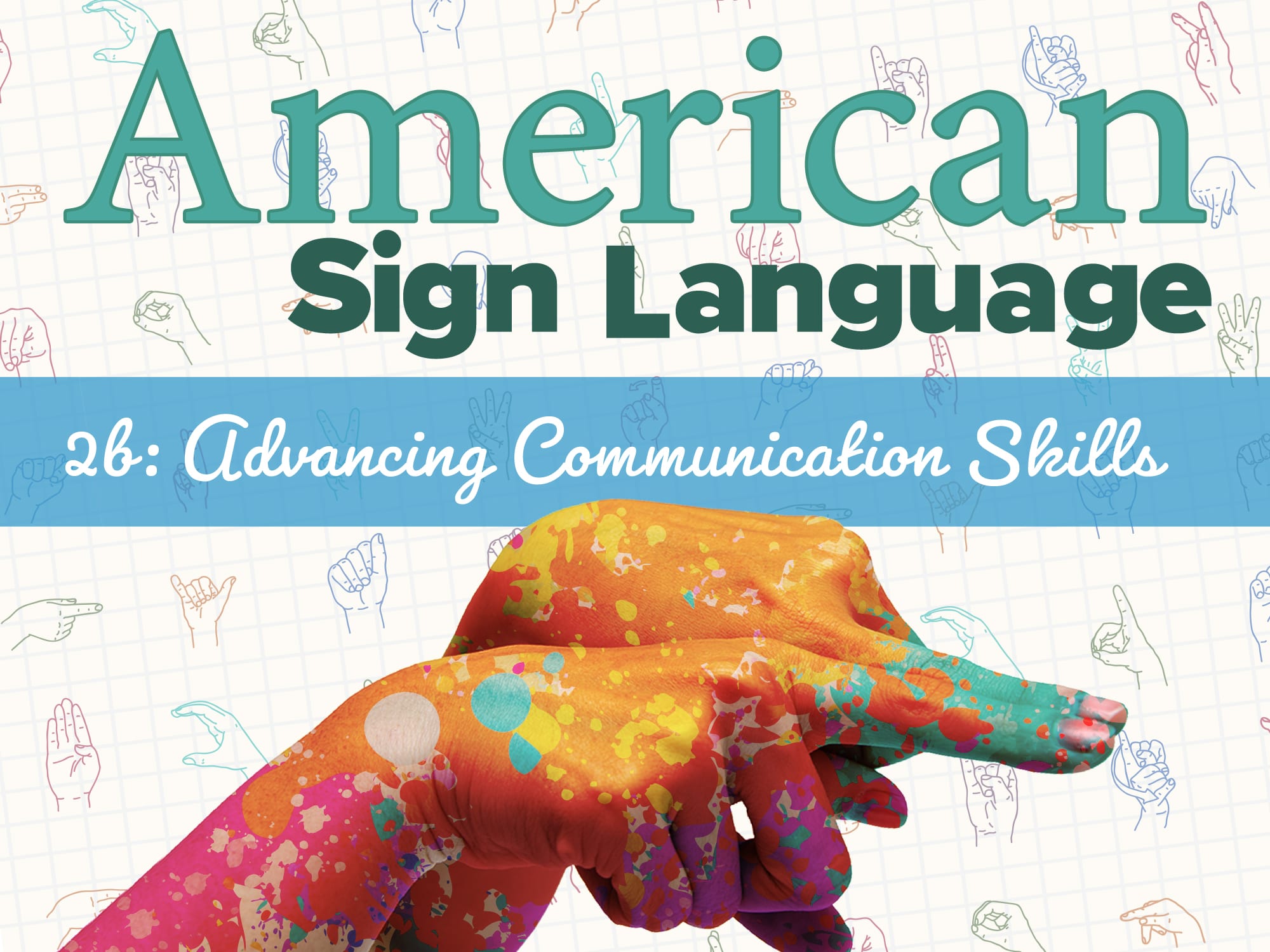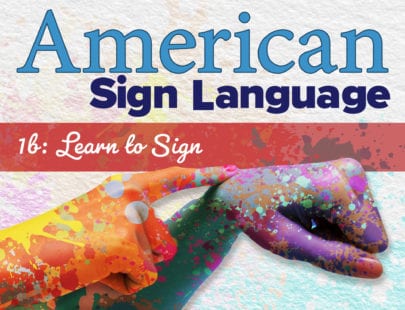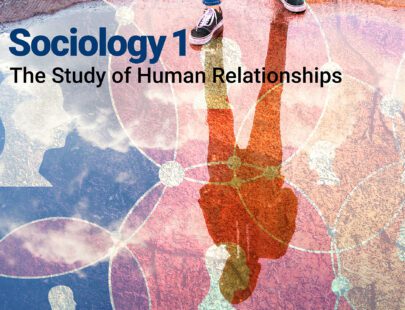
American Sign Language 2b: Advancing Communication Skills
Ready to dive deeper into learning about the Deaf community, culture, and language? Learn about sequencing, transitions, role-shifts, and future tenses. Discover how to tell a story and ask questions, benefiting with greater exposure to deaf culture. Speed, conversations, signing skills, and cultural awareness are characteristics of this course.
Units at a Glance
Unit 1: Making Plans
Deaf people used to be called “deaf and dumb,” but the Deaf President Now protests held by the student body at Gallaudet University in 1988 proved that not only could Deaf students organize but also that they were articulate leaders who wanted to see Deaf people in positions of power. Together, we’ll trace this important event in Deaf history, and since such events don’t simply happen, but rather require a great deal of advance planning, we’ll also work on making plans in ASL by learning how to create lists, sequences, and rankings with the correct NMMs. Finally, we’ll delve into the process of researching Deaf topics while making sure to include Deaf perspectives from original sources—knowledge every ASL student should have!
What will you learn in this unit?
- Describe how the Deaf President Now movement developed
- Relate how the first deaf president of Gallaudet University came to power
- Sign lists and sequences properly when making plans
- Practice NMMs with past and future tense questions
- Research Deaf culture using appropriate Deaf sources
Unit 2: What's New?
S’up? Did you hear the news? How about see the news? Getting the news can be difficult if you are deaf, but new technologies have allowed for more captioning and more ASL video news sources to bring important stories to the Deaf community. Together we will learn how to tell a good story in ASL, whether true or fictional, and get some practice using ASL literature techniques to captivate your audience with your signed stories.
What will you learn in this unit?
- Appreciate a classic ASL joke and re-tell it yourself
- Find and appreciate news sources accessible to the deaf
- Understand role-shifting in ASL literature
- Practice techniques to tell a cohesive and engaging story in ASL
- Dissect the elements of an ASL story
Unit 3: Just A Story
Aw, that’s just a story! But it might be a true story, even if it looks like it could be unbelievable. Isn’t that the fun of telling stories? They can be funny, unusual, crazy, and still be true at the same time. We’ll dig in to some funny stories, both fictional and true, while we learn more techniques for good storytelling and grammar. Plus, we’ll learn some cool ASL expressions, so get ready—you’re not going to want to miss the boat!
What will you learn in this unit?
- Break down the parts of a classic ASL story
- Recognize some common ASL idioms or slang expressions
- Correct yourself properly if you make a mistake in signing
- Use sign order to emphasize what you are talking about
- Decipher the meaning in personal ASL stories
- Recognize cognates and false cognates
Unit 4: Poetry in Motion
“Roses are red, violets are blue…” So much of the beauty of ASL literature comes from the visual splendor of the language, but did you know that you can rhyme in ASL? The traditions and forms of ASL literature are unique among literary arts in that they don’t have a written representation that can do them justice—you need to see the poems and stories performed to visualize and appreciate them. Playing with the language visually can be just as complex—or even more so—than written English. With unique practices of sequencing handshapes and varying signs, this poetry in motion must also, of course, be effectively communicated to an audience. Together, we’ll jump into ASL literature, discover how to apply the appropriate rules to create our own stories and poems, and learn about two prominent ASL poets.
What will you learn in this unit?
- Recognize ASL rhymes
- Identify many forms of ASL literature
- Apply the rules for ASL stories with handshape constraints
- Create your own ABC, number, or word stories in ASL
- Define the idea of Deafhood
Unit 5: Get Outta Town!
Think of your dream vacation. Can you visualize it on a map? Mapping and indexing space are intrinsic parts of American Sign Language, but did you know that Deaf geography is contributing important insights to the wider field of geography? Deaf geography charts the cultural use of space, looking at how hearing and Deaf culture come into contact with each other in the physical world. Deaf space is also political, and we will talk about how important it is to Deaf culture. For more culture mixing, travel the world with ASL and learn how to describe your journey. Finally, we will quickly review some important grammar to take your signing to the next level of fluency, inviting you to become even more articulate in ASL.
What will you learn in this unit?
- Discuss the concerns of Deaf geography and Deaf space
- Design space with architectural features that are ideal for communicating in ASL
- Apply the concepts of contact zones and diaspora to the Deaf community
- Formulate a plan for traveling and report on it in ASL
Required Materials
Suggestion/Recommendation for course: Online or in-person venue for students to interact with each other to practice and use ASL
Required:
- A camera (cell phone, tablet, or computer camera is fine)
- Computer or tablet to play video
- Screen-capture software to record conversation or camera with ability to record conversation
- Simple video editing software



